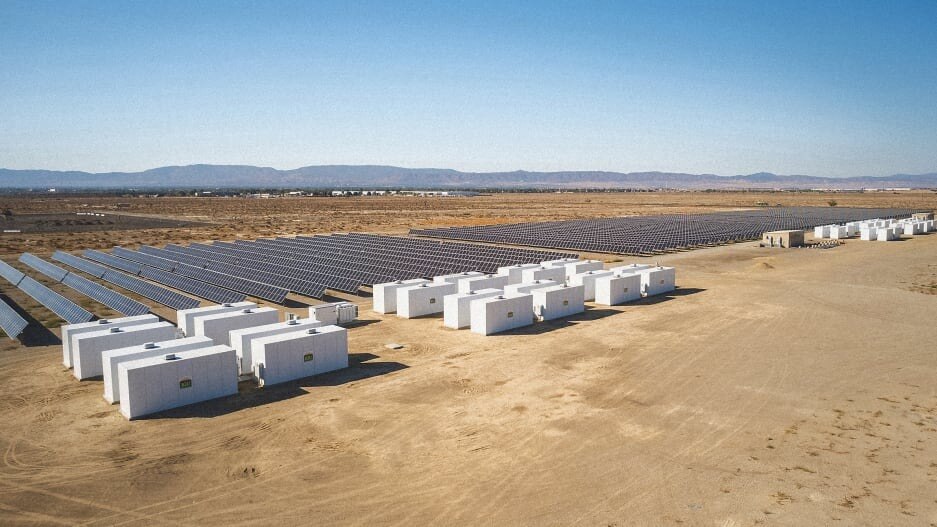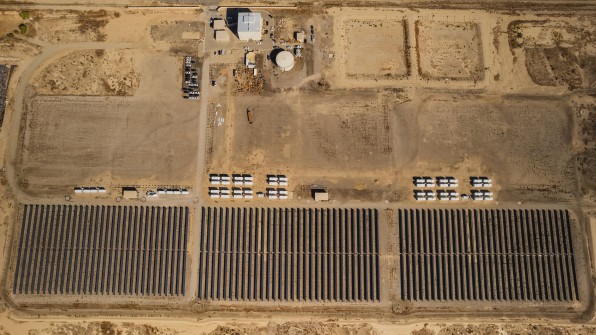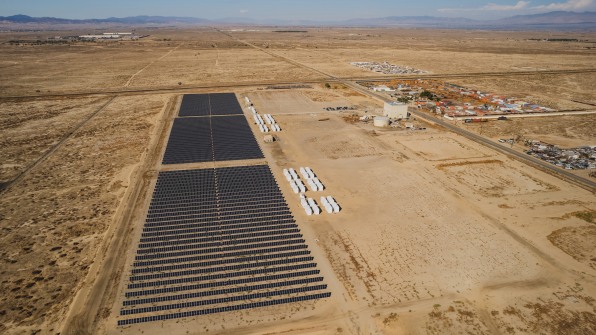- | 10:00 am
These old EV batteries now store solar power for the grid
The batteries are wired together, storing solar power during the day, and distributing it to California’s power grid at night.

In a sandy field on the edge of the Mojave Desert in Lancaster, California, an array of solar panels sits next to dozens of long white boxes that are filled with used batteries from electric cars. At the site, more than 1,000 old batteries from Nissan and Honda EVs now have a second life: During the day, they store electricity from the solar panels and excess energy from the electric grid. At night, when California homes need more power and the supply of solar drops, the startup that runs the system, B2U Storage Solutions, sends electricity back into the grid.
It’s a way to help solve two problems in the energy transition. As cheap renewable energy is added to electric grids, there’s a growing need for storage when the sun isn’t shining or the wind isn’t blowing. Globally, the International Energy Agency says the world will need to add 44 times more grid-scale storage between 2021 and 2030 to be on track for net zero goals. At the same time, as electric vehicles start to become mainstream, the number of used batteries—filled with valuable and toxic materials that shouldn’t end up in landfills—are also quickly growing.

“The supply of these batteries that ultimately all need to get recycled is going to be very large in just a few years’ time,” says B2U CEO Freeman Hall. Already, he says, there’s a steady stream of old EV batteries available, either because some early EVs are reaching the end of their lives or because some batteries have manufacturing issues and are recalled, but could still be used in another application.
Even if a battery no longer has enough power for a car, “there’s still a lot of utility to those batteries,” Hall says. In a car, it takes a lot of power to accelerate, but for energy storage, the batteries charge and discharge slowly each day and can operate at a lower current.
In the past, other approaches to reusing old batteries involved disassembling the parts and rewiring, making the process expensive. B2U has a “plug and play system” that leaves the batteries in their original casing and uses the original battery-management tech they came with. The batteries are wired together, and the company’s own technology monitors them and can connect and disconnect them to get the best performance, even when some batteries are more worn out than others.
Multiple companies are also working on recycling old battery materials into new batteries. But it makes sense to start first with reuse, says Hall. The old batteries that the company works with still have between 60% and 85% capacity left.

“We’ve got a need to get the full value out of EV batteries, and the more that reuse can be successful and be integrated with recycling, it will ultimately help drive down costs and add more value for the whole industry, for [car manufacturers], and for consumers,” Hall says.
Right now, with one location, the startup is still proving that the system can work. It’s the first of its kind to sell power back into the wholesale electricity market. “You want to get that track record going,” he says. “You want to get that upcycle experience over time that then can demonstrate the reliability, the performance. With that data set, you’re in a much better position to scale.”






































